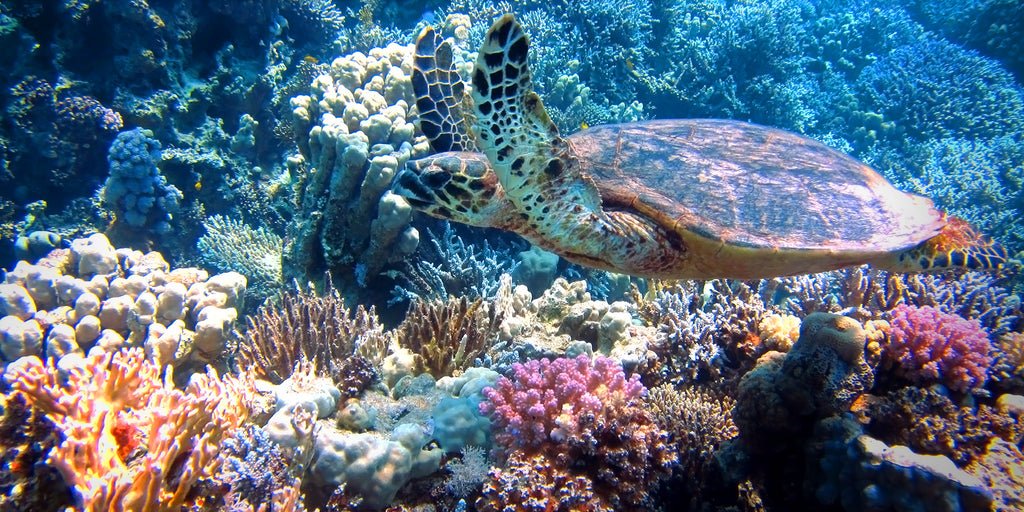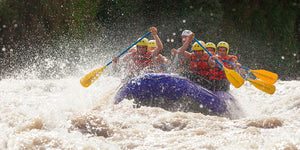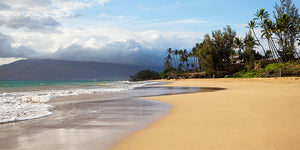Explore the Amazing Coral Triangle in Southeast Asia

Some of the most stunning snorkeling and diving spots in the world are located in Asia. The amazing Coral Triangle is a vast area with endless opportunities to see beautiful corals and marine life up close. Divers flock to the area from all over the globe. Home to about 75% of all known coral species in the world, the location is one of the greatest global centers for marine biodiversity.
Covering more than 2.2 million square miles of ocean floor, this triangular geographical area is located in the tropical waters of Indonesia, Malaysia, Papua New Guinea, Philippines, Solomon Islands, and Timor-Leste. Each region contains at least 500 species of reef-building corals. The Coral Triangle encompasses the highest diversity of coral reef fishes in the world as a habitat for 56% of Indo-Pacific reef fishes and 37% of the world's reef fishes, according to The Nature Conservancy.
What should you see once you get there? Each region of the Coral Triangle offers plenty to see.
Komodo Islands, Indonesia
The Komodo National Park was created to protect the famous Komodo Dragon, but now the site also protects countless marine species. Located between East Nusa Tenggara and West Nusa Tenggara, the area includes the three large islands of Komodo, Padar, and Rinca, along with 26 smaller islands. Komodo offers an extraordinary amount of diving sites and coral reefs. Reef sharks, manta rays, marble rays, scorpionfish, giant trevallies, sunfish, dolphins, eagle rays, angelfish, pygmy seahorses, anthias, ornate ghost pipefish, clown frogfish, and blue-ringed octopus are just some of the treasures you might see. A spectacular range of colorful corals, sponges, nudibranchs, and tunicates make Komodo a diver’s delight.
Sipadan Island Park, Malaysia
Part of one of the richest marine habitats in the world, this site has something for everyone. Located off the east coast of Sabah in the Celebes Sea, Sipadan took thousands of years to develop while living corals grew on top of an extinct volcanic cone. The result is an amazing adventure for all divers. You might see a large number of sea turtles, along with huge schools of barracuda, jackfish, big-eye trevally, and bumphead parrotfish. Pelagic species such as manta rays, eagle rays, dogtooth tunas, scalloped hammerhead sharks, reef sharks, and whale sharks are found in the area. For qualified divers only, there’s also a “Turtle Tomb” where skeletons of lost turtles can be found in an extensive underwater limestone cave system. This dive requires special equipment and an experienced guide.
Tubbataha Reefs Natural Park, Palawan, Philippines
Since the park started protecting the reefs, they are healthy and thriving. This remote area is only accessible to divers for a few months per year. The reefs are guarded during the off-season, so they are able to flourish without any human impact. You can see everything from sea turtles to a large population of humphead wrasses and occasionally whale sharks. Dolphins, manta rays, and reef sharks roam the area, along with large schools of jackfish and barracudas.
Kimbe Bay, Papua New Guinea
Located in West New Britain, Kimbe Bay has tranquil waters and beautiful reefs, such as Susan’s Reef, Father's Reef, South Emma, and Vanessa’s Reef. The area is a great place for macro and wide-angle underwater photography with soft corals, barrel sponges, pink sea whips, anemones, sea fans, and hard coral gardens. Healthy populations of tropical reef fish surround the area with rainbow runners, reef sharks, and jackfish patrolling the reefs. You might even see mantas, dolphins, and orcas.
Nino Konis Santana National Park, Timor-Leste
Beautiful hard coral reef gardens can be found in the Nino Santana National Park, the young country’s first national park. Not as crowded with tourists as some other places, the park offers a more tranquil environment with plenty of fish. Large schools of sweetlips, barracudas, snappers, fusiliers, and surgeonfish are found in the area, along with garden eels and reef sharks. You can even see some cetaceans as they migrate through the park.
Raja Ampat Islands, Indonesia
One of the best diving destinations in the world, Raja Ampat is located in Indonesia's West Papua Province. The area includes four large islands of Waigeo, Batanta, Salawati, and Misool, plus hundreds of smaller islands. You could see giant seas turtles, mantas, wobbegong sharks, pygmy seahorses, black-tip reef sharks, and so much more. Gardens of hard and soft corals with yellow, orange, and purple sponges add to all the other beautiful colors. These spectacular reefs have everything you could want.
Anilao, Batangas, Philippines
The popular site has a reputation as one of the best muck and critter diving sites in the Coral Triangle. You might see clown frogfish, harlequin ghost pipefish, flying gurnard, and seahorses, along with different octopi species. Some consider Anilao to be the “Nudibranch Capital of the World” so there are endless opportunities to take incredible photos.
Marovo Lagoon, Solomon Islands
Located in New Georgia Islands, this beautiful area is great for warm water diving with amazing visibility. The massive lagoon has countless reefs and tranquil islands with a large amount of reef fish, including schools of mackerels and fusiliers. You could see reef sharks, eagle rays, and mobulas swimming along reef slopes. There are awesome dramatic views for plenty of wide-angle underwater photography.
Milne Bay, Papua New Guinea
The place where “muck diving” started, Milne Bay offers many diving opportunities, such as liveaboards and land-based dive operations close to all the resorts. Milne Bay has vast coral beds, wrecks, dramatic walls, sloping coral reefs, and pinnacles. There’s an amazing diversity of species for macro photography, including frogfish, ghost pipefish, seahorses, cuttlefish, flatworms, mandarin fish, rare nudibranchs, and even rhinopia.
Lembeh Strait, Indonesia
Lembeh is home to incredible muck diving, rare marine life, and unique treasures. Located in North Sulawesi, the site is known to some as the “Critter Capital of the World” where you never know what you will encounter. Divers have seen the hairy frogfish, flamboyant cuttlefish, wonderpus octopus, the bobbit worm, plus a whole lot more. Photographers love this site for all the amazing underwater discoveries and endless macro opportunities.
Credit: Photo by Freepik
- Watersports Staff






Comments 0